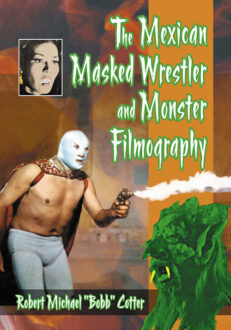Chess Rivals of the 19th Century
With 300 Annotated Games
$49.95
In stock
About the Book
Many historical chess books focus on individual 19th century masters and tournaments yet little is written covering the full scope of competitive chess through the era. This volume provides a comprehensive overview, with more than a third of the 300 annotated games analyzed by past masters and checked by powerful engines. Players such as Max Lange and Cochrane, known to the chess public only by the name given to a fierce attack or gambit, are brought to life. Fifty masters are each given their own chapter, with brief biographies, results and anecdotes and an endgame section for most chapters.
About the Author(s)
Bibliographic Details
Tony Cullen
Format: softcover (7 x 10)
Pages: 477
Bibliographic Info: 54 photos, diagrams, games, bibliography, indexes
Copyright Date: 2021
pISBN: 978-1-4766-8072-9
eISBN: 978-1-4766-3924-6
Imprint: McFarland
Table of Contents
Acknowledgments vi
Introduction 1
1—The Chess Scene Before 1834 3
2—Louis-Charles Mahé de la Bourdonnais 9
3—Alexander McDonnell 18
4—Ludwig Erdmann Bledow 25
5—Paul Rudolf von Bilguer 30
6—Bernhard Horwitz 36
7—Tassilo von Heydebrand und der Lasa 42
8—John Cochrane 49
9—Howard Staunton 57
10—Lionel Adelberto Bagration Felix Kieseritzky 67
11—Serafino Dubois 74
12—Johann Jacob Löwenthal 81
13—Adolf Anderssen 91
14—Max Lange 104
15—Ernst Karl Falkbeer 109
16—Daniel Harrwitz 115
17—George Henry Mackenzie 127
18—Paul Charles Morphy 136
19—Louis Paulsen 148
20—Ignaz Kolisch 159
21—William Steinitz 167
22—Gustav Richard Ludwig Neumann 185
23—Joseph Henry Blackburne 194
24—Emil Schallopp 206
25—Henry Edward Bird 213
26—Cecil Valentine De Vere 223
27—Samuel Rosenthal 230
28—Johannes Hermann Zukertort 236
29—Amos Burn 246
30—James Mason 255
31—Szymon Abramowicz Winawer 264
32—Berthold Englisch 273
33—Mikhail Ivanovich Chigorin 280
34—Semyon (Simon) Alapin 291
35—Johann Berger 297
36—William Henry Krause Pollock 304
37—Isidor Arthur Gunsberg 314
38—Siegbert Tarrasch 322
39—Max Weiss 332
40—Emanuel Stepanovich Schiffers 340
41—Curt von Bardeleben 348
42—Jacques Mieses 356
43—Harry Nelson Pillsbury 365
44—Emanuel Lasker 377
45—Jackson Whipps Showalter 393
46—Adolf Albin 399
47—Rudolf Charousek 407
48—Carl August Walbrodt 413
49—Georg Marco 420
50—Dawid Markelowicz Janowski 429
51—Géza Maróczy 438
The 19th Century’s Top Ten Tournament Players 449
The 19th Century’s Top Four Match Players 450
Bibliography 451
Opponents Index (to game numbers) 455
Annotators Index (to game numbers) 458
Openings Index—Traditional Names (to game numbers) 459
Openings Index—ECO Classification (to game numbers) 460
Index of Endgames (to page numbers) 461
General Index (to page numbers) 462
Book Reviews & Awards
• “This deeply important, useful book provides a comprehensive overview of competitive chess throughout the 19th century….The scope of this volume makes it immensely valuable, providing key insights on the century’s strongest players… This is a splendid, meticulously researched work….essential”—Choice
• “A real treasure trove…Anyone looking to escape the present day, if only for a little while, would do well to purchase a copy”—Chess
• “The book does a good job of demonstrating some fascinating games…recommended”—The Chess Journalist
• “This book is culturally enriching…a lovely resource…I thoroughly enjoyed it…I believe that it deserves a place on any chess players’ bookshelf.”—Chess Book Reviews
• “A good read…carefully researched, thoroughly illustrated, indexed, etc.—everything that makes for a great book.”—American Chess Magazine
• “When I picked up the book the first thing I liked was the superb cover illustration of a host of 19th century rivals. Then on opening up the generous-sized pages I couldn’t help but notice that the typography and page make-up are amongst the very best McFarland has offered over the years. The new use of larger diagrams and chess figurine fonts, together with an attractive layout and portraits of the players, makes for a pleasurable and easy read of both the biographical text and analysis of games, in which both original and computer-checked annotations are skillfully harnessed. … Because the author has displayed excellent judgment in his choice of material, every page has impact and well and truly transports the reader back in time to the Victorian era, when the smoke-filled salon of Simpsons-in-the-Strand was the chess citadel of the world. The extent of the author’s research is very much in evidence”—British Chess Magazine





